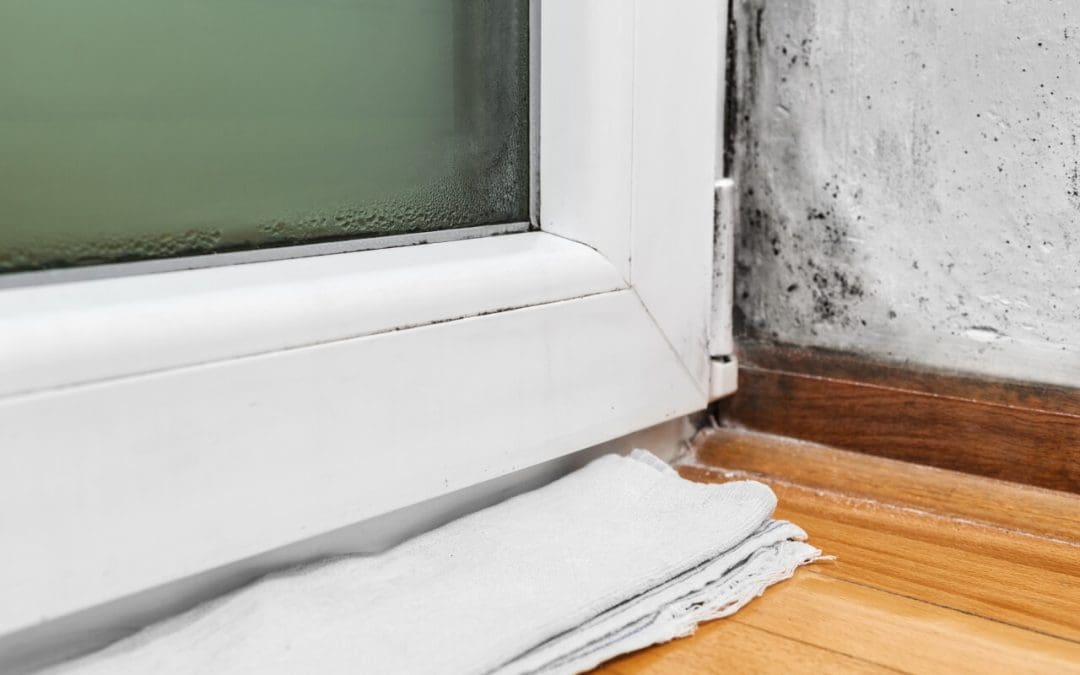No one wants mold growing in their home. Mold growth is unsightly, causes property damage, and can be a health hazard. Keep an eye out for signs of mold growth in your home and take action immediately. Here are four common indications of mold growth and a few tips on how to know when to call a professional for mitigation and repairs.
Common Signs of Mold Growth
1. Musty Odors
One of the first and most obvious signs of mold growth is a musty, earthy smell. If you notice a persistent smell in your home that doesn’t go away with regular cleaning, it is likely mold. Mold thrives in damp, dark places such as bathroom corners, crawlspaces, and inside walls. Trust your nose and don’t ignore an unpleasant smell. Investigate to locate the source of the odor.
2. Visible Mold Growth
If you see mold, no matter how small, it is essential to act quickly. Mold spores easily spread through the air, so even a small patch of visible mold is an indication of a larger infestation. Look for spots or streaks of discoloration on walls, ceilings, floors, and other surfaces. Mold can appear in various colors but is often black, green, or white.
3. Water Damage
Where there’s moisture, there is a high risk for mold growth. Any type of water infiltration, be it from a leaking roof, a burst pipe, or a damaged gutter, can create the perfect conditions for mold to grow. Look for signs of water damage such as plumbing leaks, water stains, peeling wallpaper, and dampness in your home. Repair damage as soon as possible.
4. Signs of Mold Growth: Health Symptoms
Mold may cause health symptoms in your family members, including allergies, respiratory issues, and headaches. If you or anyone in your home is experiencing unexplained health issues, it could be a sign of mold growth. Symptoms may improve when you leave the house, but reoccur when you return home. If this is the case, mold could be present. Call a professional to inspect for leaks and water damage and make repairs.
Mold growth in your home is not only unsightly but it can also be a significant health hazard. By keeping an eye out for the common signs and taking immediate action, you can prevent it from spreading and causing further damage. The best way to protect your home is to keep it clean and dry and repair water damage as soon as you spot it. If you are unsure about the severity of mold, contact a professional for mitigation. By being proactive, you keep your home healthy and safe for you and your family.
FAQ
Q: Are all types of mold visible, and what colors should I look for when inspecting for mold growth?
A: Not all molds are visible, but even a small patch should be addressed promptly. Mold can appear in various colors, including black, green, or white. Look for spots or streaks of discoloration on walls, ceilings, floors, and other surfaces.
Q: How quickly can mold grow after water damage occurs, and why is immediate action necessary?
A: Mold can start growing within 24-48 hours after water damage occurs. Immediate action is crucial to prevent further infestation. Repair any water damage promptly to eliminate the conditions favorable for mold growth.
Q: What steps can I take to prevent mold growth in my home proactively?
A: Keep your home clean and dry, addressing water damage as soon as you spot it. Regularly inspect areas prone to moisture, such as bathrooms and crawlspaces. Maintain proper ventilation and consider using dehumidifiers in humid environments.
Q: Can mold cause health issues, and what kind of symptoms should I look for in my family members?
A: Mold can cause allergies, respiratory issues, and headaches. If family members experience unexplained health problems that improve when outside the home but reoccur upon return, mold could be a factor.
Q: When should I call a professional for mold mitigation, and what does the mitigation process typically involve?
A: Call a professional if you notice visible mold, experience persistent musty odors, or if family members exhibit unexplained health symptoms. Mitigation involves identifying and addressing the source of the mold, cleaning and removing affected materials, and implementing measures to prevent recurrence.
Q: Is mold mitigation covered by homeowners’ insurance, and what steps should I take if I suspect mold in my home?
A: Coverage varies, but many homeowners’ insurance policies may cover mold mitigation if it results from a covered peril, such as water damage. Contact your insurance provider promptly if you suspect mold and document the issue with photographs before taking any action.
Home Inspection Protection offers inspection services in Naples, Florida, and the surrounding area. Contact us today to schedule an inspection.

